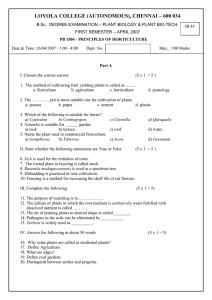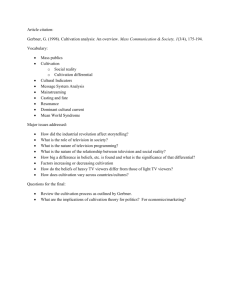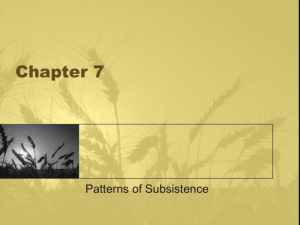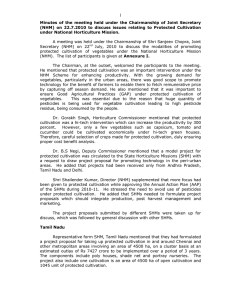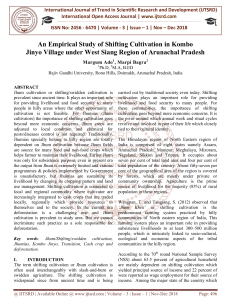Patterns of Subsistence Part III
advertisement
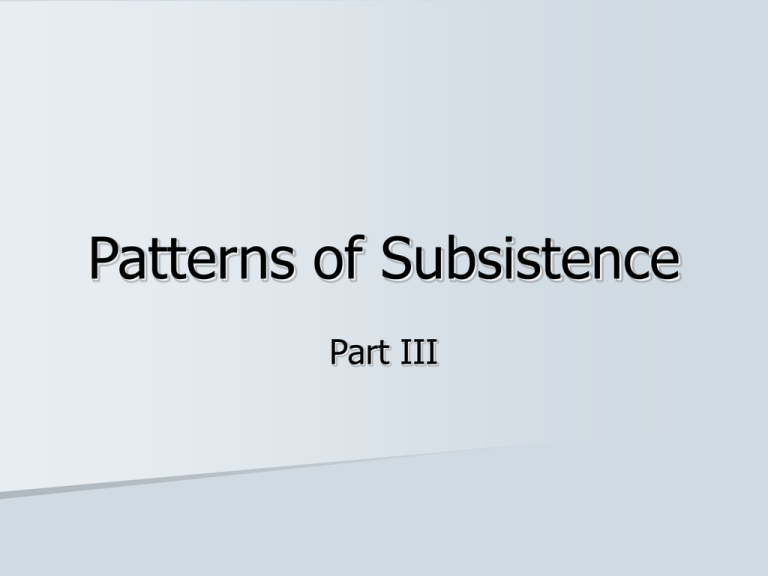
Patterns of Subsistence Part III Neolithic The New Stone Age; prehistoric period beginning about 10,000 years ago in which peoples possessed stone-based technologies and depended on domesticated plants and/or animals. Neolithic Transition Sometimes referred to as Neolithic revolution. The profound culture change beginning about 10,000 years ago and associated with the early domestication of plants and animals, and settlement in permanent villages. Transition to Food Production Began about 11,000 to 9,000 years ago Probably the result of increased management of wild food resources. Resulted in the development of permanent settlements as people practiced horticulture using simple hand tools. Domesticates in the Archaeological Record Horticulture Cultivation of crops carried out with simple hand tools such as digging sticks or hoes. Slash-and-burn cultivation – Also known as swidden farming. – An extensive form of horticulture in which the natural vegetation is cut, the slash is subsequently burned, and crops are then planted among the ashes. Slash-and-Burn Cultivation Reburning an old, overgrown slash-andburn plot in the Amazon forest in Venezuela in preparation for new planting. Although it looks destructive, if properly carried out, slash-andburn cultivation is an ecologically sound way of growing crops in the tropics. Agriculture The cultivation of food plants in soil prepared and maintained for crop production. Involves using technologies other than hand tools, such as irrigation, fertilizers, and the wooden or metal plow pulled by harnessed draft animals. Characteristics of Agricultural Societies One of the most significant correlates of plant cultivation was the development of fixed settlements, in which farming families reside together near their cultivated fields. At first, social relations were egalitarian and hardly different from those that prevailed among food foragers. As settlements grew and large numbers of people had to share important resources such as land and water, society became more elaborately organized. Pastoralism Subsistence that relies on raising herds of domesticated animals, such as cattle, sheep, and goats. Pastoralists are usually nomadic. Pastoral Nomads In the Zagros Mountains region of Iran, pastoral nomads follow seasonal pastures, migrating with their flocks over rugged terrain that includes perilously steep snowy passes and fast ice-cold rivers. Locations of Major Early Civilizations Civilizations of Central and South America developed independently of those in Africa and Eurasia. Chinese civilization may have developed independently of those in Mesopotamia, the Egyptian Valley, and the Indus Valley. Peasant A rural cultivator whose surpluses are transferred to a dominant group of rulers that uses the surpluses both to underwrite its own standard of living and to distribute the remainder to groups in society that do not farm but must be fed for their specific goods and services in turn. Development of Cities Cities developed as intensified agricultural techniques created a surplus. Individuals were free to specialize full-time in other activities.
